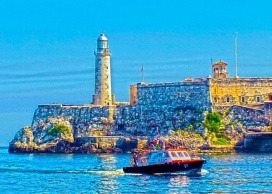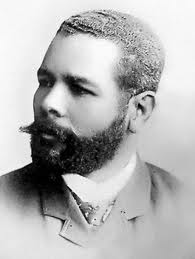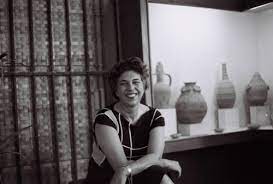
Havana ephemeris. June 14th
1845. Antonio Maceo Grajales is born in the city of Santiago de Cuba, symbolically qualified as the Bronze Titan.

He was only 23 years old when he joined the war for the independence of Cuba in 1868. From being a simple soldier, due to his active participation in the development of the confrontations with the Spanish forces, he was given military ranks and different missions. In 1878, his figure stood out in a notable way when he carried out what has historically been known as La Protesta de Baraguá. Maceo and the patriots who supported him thus became symbols of the revolutionary intransigence of the Cuban people by not accepting the so-called Zanjón Pact without the independence of Cuba or the abolition of slavery.
Some time later he had to leave Cuba. He resided in Jamaica and also Costa Rica, but always continued to feel the commitment that he had with the liberation of his native land from Spanish colonial rule.
Consistent with this, in 1895 he returned to Cuba to participate in the war that had restarted on February 24 of that year.
He then participated in battles and combats and also successfully led a column that carried out the invasion from the eastern to the western part of Cuban territory.
His fall in combat occurred on December 7, 1896 in the area of San Pedro, in Bauta. His body and that of his assistant Francisco Gómez Torres could be rescued by the Cuban independence fighters.
They were secretly transferred and buried in the area of El Cacahual, in Havana, a place that was not identified until the war was over.
Later, a large monumental complex was built in El Cacahual. .
1912. Rita Longa Aróstegui is born in Havana.

Her creative work can be seen in dissimilar projects in various parts of our country. Among her most relevant work is the so-called Fuente de las Antillas, located at the entrance to the city of Las Tunas. Other works of hers are the Family Group of the Havana Zoo, popularly known as the Venaditos, the statue of the Virgen del Camino, Las Musas of the Payret theater, the Tropicana Cabaret dancer and the sculptures of the Taino village of Guamá .
Also among her best-known works are the famous Gallo de Morón, in Ciego de Ávila, the figures of the Hotel Riviera, in Havana, and the Santa Rita de Casia, in the Havana church of the same name. The group of 17 wooden figures from the Majagua collection that she created after a cyclone knocked down a tree of this type that grew in the patio of her house was described as singularly beautiful.
In 1995 she received the National Prize for Plastic Arts and was also awarded the Replica of the Machete of Generalissimo Máximo Gómez and the Félix Varela Order, First Degree.
Her death occurred in Havana on May 29, 2000.n Havana on November 26, 2017.
1996. Enrique de la Osa dies in Havana. He was one of the great Cuban journalists of the 20th century. He was also a prominent anti-imperialist fighter.

His first writings appeared in the Diario de la Marina in 1927.
He later collaborated with the Alma Mater magazine of the University of Havana.
In the 1930s, he directed several weeklies and was also a copy editor for the newspaper El Mundo.
In 1940 he obtains a journalistic award on the occasion of the centenary of the National Archive of Journalists to be celebrated the following year.
On July 4, 1943, he founded and directed the "In Cuba" section in Bohemia magazine, which stood out for the quality and audacity of investigative journalism and the adherence to the truth when referring to current national events.
He was also a professor at the Manuel Márquez Sterling Professional School of Journalism from 1960 to 1971, although between 1963 and 1965 he combined that responsibility with that of director of the newspaper Revolución. He was also director of the Bohemian Magazine.
For his life's work he received, in 1992, the José Martí National Prize for Journalism, awarded by the Union of Journalists of Cuba.
His birth took place in the town of Alquizar on February 22, 1909.